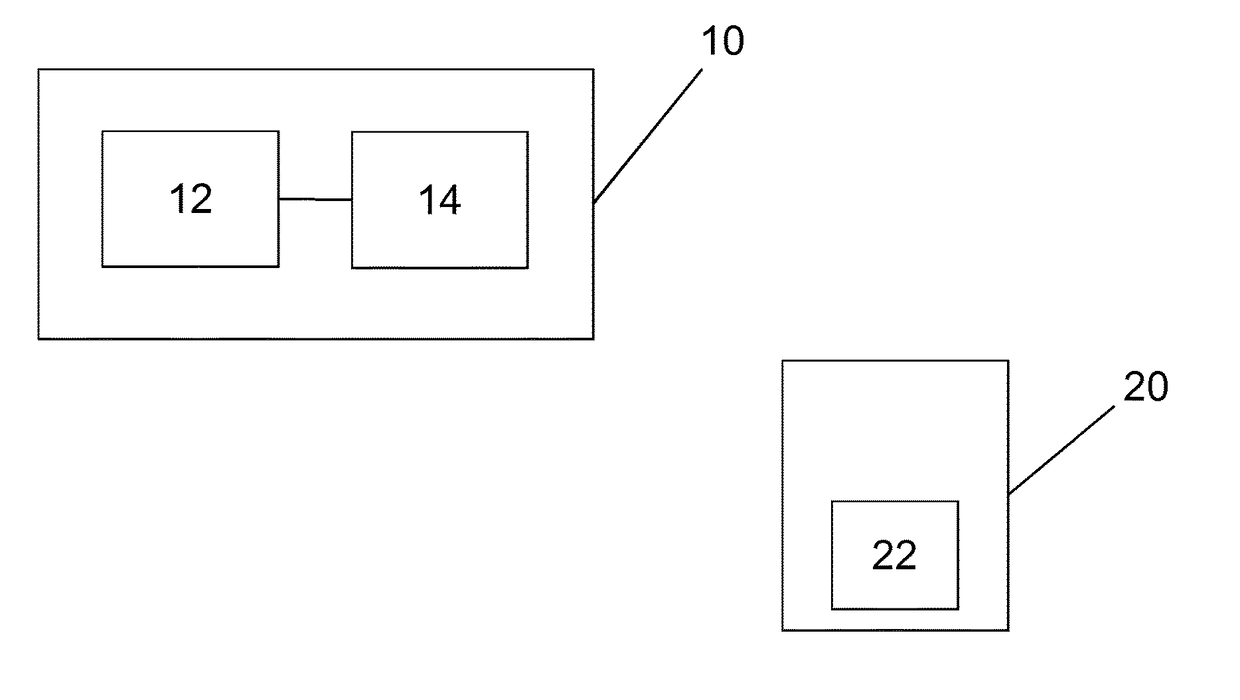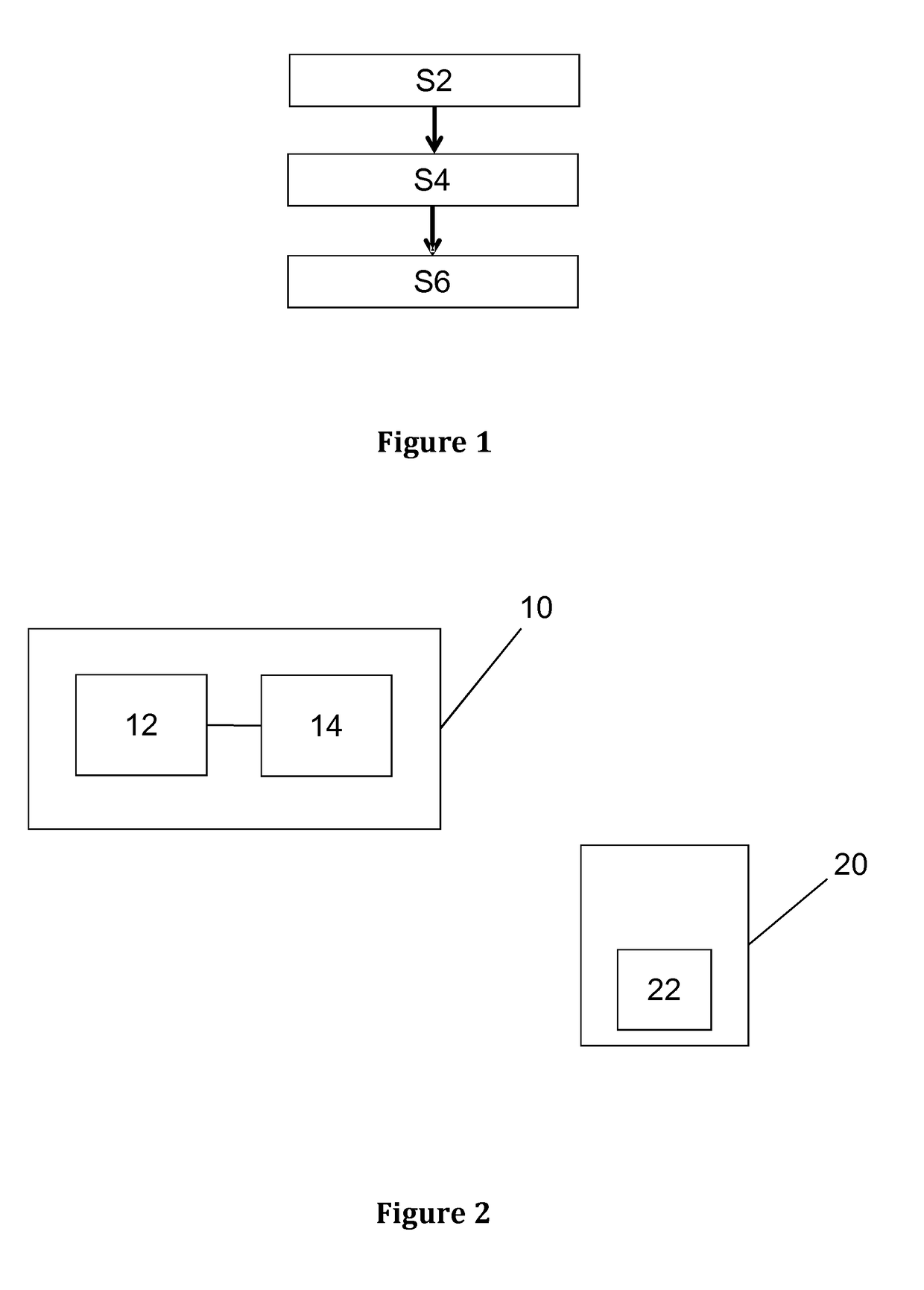Monitoring component and method for monitoring a visual capacity modification parameter of a user of at least one display device
a monitoring component and user technology, applied in the field of monitoring components for monitoring the visual capacity modification parameter of users of at least one display device, can solve problems such as and achieve the effect of reducing the risk of deterioration of the visual capacity of users
- Summary
- Abstract
- Description
- Claims
- Application Information
AI Technical Summary
Benefits of technology
Problems solved by technology
Method used
Image
Examples
first example
to Protect the Eyes from Digital Display Devices
[0118]In this example, the display use data indicative of a use of a display device by the user is the use duration of the screen of the display device, which can be measured by a clock of the display device during the display use data determining step S2.
[0119]For example, a time counter can be activated each time the display device is switched on to determine the time spent watching at the display device continuously. The time counter is stopped when the display device is switched off.
[0120]In another example, the display use data may be determined more finely by using information coming from an inclinometer or an accelerometer, or from a front camera of the display device to activate / deactivate the time counter. Indeed, to determine the time spent by the customer watching the display device continuously, it may be used a face detection and / or eye tracking using the front camera and software embedded in the display device to check if...
second example
to Protect the Eyes During a Long Period of Near Vision
[0133]In this example, the display use data is the distance between the screen of the display device and the eyes of the user, which can be determined by a front camera of the display device during the display use data determining step S2.
[0134]Indeed, the analysis of the picture taken by the camera with image processing tools allows determining the distance for example every minute. The simplest formula to estimate distance between the screen and the eyes is pinhole projection formula: x / f=X / d, wherein x is the size of the eye or the pupillary distance on the sensor, f is focal length of the lens, X is the real size of the eye or real pupillary distance, and d is distance from nodal point to the eye.
[0135]During the visual capacity modification parameter determining step S4, a visual capacity deterioration risk is determined based on the duration of the time spent in near vision, i.e. when the distance between eyes and the scre...
PUM
 Login to View More
Login to View More Abstract
Description
Claims
Application Information
 Login to View More
Login to View More - R&D
- Intellectual Property
- Life Sciences
- Materials
- Tech Scout
- Unparalleled Data Quality
- Higher Quality Content
- 60% Fewer Hallucinations
Browse by: Latest US Patents, China's latest patents, Technical Efficacy Thesaurus, Application Domain, Technology Topic, Popular Technical Reports.
© 2025 PatSnap. All rights reserved.Legal|Privacy policy|Modern Slavery Act Transparency Statement|Sitemap|About US| Contact US: help@patsnap.com


